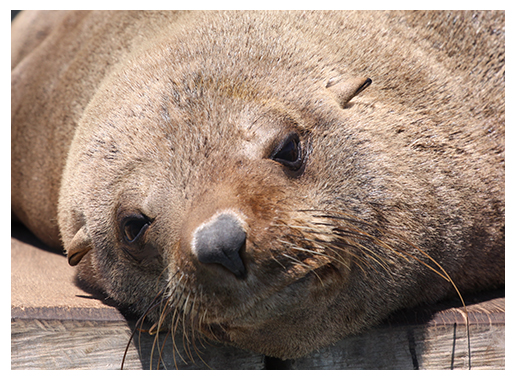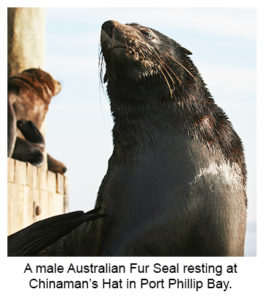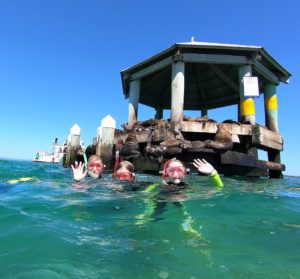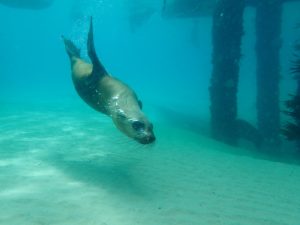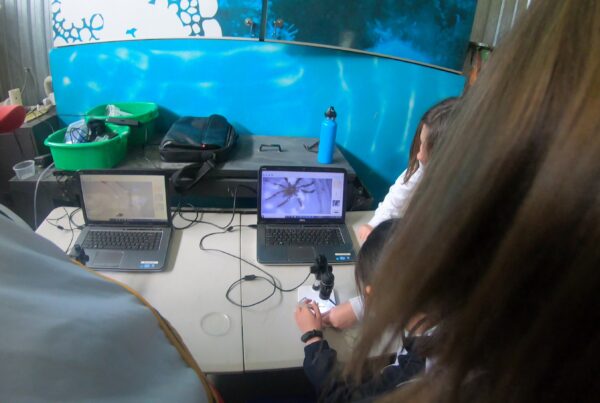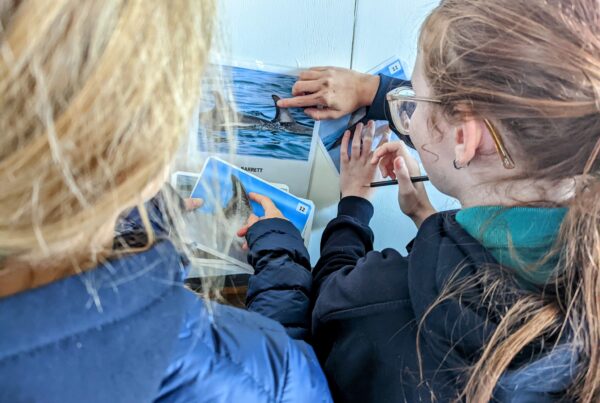Did you know this seal is found in Port Phillip Bay?
This is an Australian Fur Seal, easily the largest animal we have discussed in a Creature Feature, and our first mammal. Fur Seals can be distinguished from other seals by their external ears, two layers of fur and long front flippers, which unlike true seals, they use when moving on land.
The Australian Fur Seal is the largest of the fur seals with males reaching 2.25m in length and weighing up to 360kgs. The females are smaller, 1.7m and 110 kg. The Australian Fur Seal uses its flippers on land to “walk”, but it is in the water that seals are most graceful. They use their large front flippers to propel themselves and use their rear flippers to steer. Their blubber layer and two layers of fur keep them warm when in the water.
Seals spend a lot of time at sea hunting for food, only returning to land every 7-10 days. They eat fish, squid and octopus, which they catch during dives lasting 3-4 minutes to depths of up to 160 metres. Longer dives, of 6-7 minutes have been recorded.
During their fishing trips which may cover more than 200 kilometres of ocean, the seals will need to rest, which they do with half their brain asleep at a time. The eye corresponding to the awake half of the brain is open and keeping an eye out for predators while the other eye is closed. The seals also use small islands in Bass Strait as haul outs, places where they spend 2-3 days resting and sleeping deeply before returning to the sea.
The physiology of the Australian Fur Seal is well suited to long dives with short intervals at the surface. They need a store of oxygen to use while diving but storing air in their lungs is not ideal as air is buoyant and their lungs are compressed during a dive. Instead, seals use their blood and muscles to store oxygen. Their muscles contain high concentrations of myoglobin, a chemical that binds to oxygen, allowing oxygen to be packed into the muscles prior to a dive.
Their blood has three key adaptations that aid the transport of oxygen. Firstly, seals have a large blood volume, around 12% of their body weight, (humans = 7%). Secondly, their blood has a high percentage of red blood cells (seals 50%, humans 25%) and thirdly, each red blood cell contains a lot of haemoglobin. This means that a seal’s blood can carry a lot of oxygen, both during a dive and while at the surface replacing oxygen used during a dive.
Whilst these are wild animals and everyone should keep a respectful distance, they are also very playful and we are very lucky to be able to view these animals up close at a structure called Chinaman’s Hat in Port Phillip Bay.
Watch these remarkable animals as they swim and play in the waters!
If you would like to learn more about seals and the huge diversity of life that can be found in the shallows along our shorelines please contact Education Director Mandy Robertson at education@dolphinresearch.org.au

